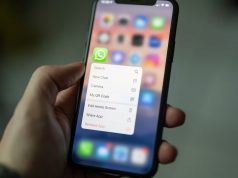Consumers today are always online, so digital marketing may seem like an effective way to reach more customers. Just imagine all the advertising your audience is overwhelmed with daily. Digital advertisements are a stream of never-ending messages across all social platforms. Due to many promotions, consumers are skipping ads, and some are even paying to block ads. This is because consumers think that content from most brands is irrelevant and not meaningful.
It’s now clear why experiential marketing is a good marketing strategy. It offers consumers a direct experience with your product or service. Live events where brands interact with customers are a great way to connect with your brand. Most consumers enjoy an event where brands demonstrate how a product or service is used, helping them better understand the product. Experiential marketing events allow for engagement and interactions digital marketing can’t offer. Here’s how experiential marketing can benefit your business.
Experiential marketing is immersive.
Consumers support brands that provide immersive experiences. One advantage of experiential marketing is that it taps to your five senses, leading to an immersive experience. Immersive experiences create an excellent first impression and are more memorable. When consumers come to your event to touch, see, and listen to your brand story, it’s an immersive experience. Chances are they feel connected to your brand and will likely purchase from you.
As humans, we slowly stop responding to stimuli after regular exposure, and this is called habituation. Habituation is when you see something without processing it. For example, think about the numerous times you’ve driven on your usual route from work and home, and you realize you don’t remember most of the drive home. You’re safe. It’s just that you’re too used to the route that you aren’t mentally engaged. This is how consumers are now relating to brands. They scroll through ads and ignore brands because they feel that they have nothing unique to offer. To break through this drawback, think about the five senses and consider those that most relate to your branding. Find a way to incorporate smell, taste, and touch into an experience.
Experiential marketing takes you to your target audience.
Experiential marketing takes you to your target audience, and you have an opportunity to interact with them. Unlike digital advertisements that feel intrusive, real-life events allow customers to come to you and hear your message. Consumers who drop in already show interest and are more open to interacting with your brand. You can take your message to where your consumers live, work, play, shop, parks, and fairs, or other businesses; the options are numerous. Once you identify your target audience, you can find out what resonates with them.
Once you identify the right audience, you can figure out what type of marketing campaign to run. For example, a food event will be successful in the evening when people are hungry and rushing from work. The key to experiential marketing is finding the right time and the right place when they are open to listen to you and interact with your brand.
Experiential marketing is the perfect way to show your brand cares.
The global pandemic Covid-19 has hit so many people hard. Many lost their only source of income, some lost jobs, and businesses closed down. This is the time to show your consumers that you, as a brand, care about them. It shows that it’s not just about selling and making profits all the time. You can use trailers to give out food to the less fortunate. You can also give out essentials to the needy. Anything you can do as a brand to help out will be appreciated.
You can also put out a sale or discounts on products, and send the proceeds to charitable organizations that are at the forefront of helping people who have been affected by the pandemic.
Experiential marketing is memorable.
When you have a great experience, it lasts forever as a good memory, and this is what you need to give your consumers. Create an experiential marketing campaign that will be memorable for them. This creates brand loyalty and even encourages consumers to spread word of mouth about your brand. Others will share pictures on social media with families about the memorable time they had at your event. This will evoke some interest in your brand from their followers, gaining you a new audience.
Experiential marketing provides the sensory, emotional, and engaging experience that creates a lasting relationship between brands and consumers.
Experiential marketing demonstrates your brand’s value.
Customers value live events more than other forms of advertising because while most people expect educational content from the brand, most brands are fixated on entertaining content. Most content can’t explain the impact of the product or service on the consumers’ lives.
List of branding companies shouldn’t only focus on entertaining content, but they should also aim to inspire, educate, and inform their target audience. You can do this at an event where you demonstrate to consumers your products and show them how it is beneficial to their lives. At events, the consumer also has the opportunity to ask all the necessary questions concerning a brand. After the event, they will leave satisfied that they are buying a brand that offers value.
Conclusion
The use of experiential marketing to create brand awareness and increase sales shouldn’t rule out digital marketing platforms. Most brands find that integrating their digital content with experiential marketing strategies leads to more success. For example, you can have an online giveaway for your customers, and invite them to a live event together with their friends for a more interactive experience with your brand.
If you want to hold a successful experiential marketing campaign provided with trailers and the necessary banners or signs, go to https://www.craftsmenind.com/ and get a good deal. They advise you on the best strategies and designs you need for your entire event. This ensures a smooth event with no hitches.
Check Technoroll for more





